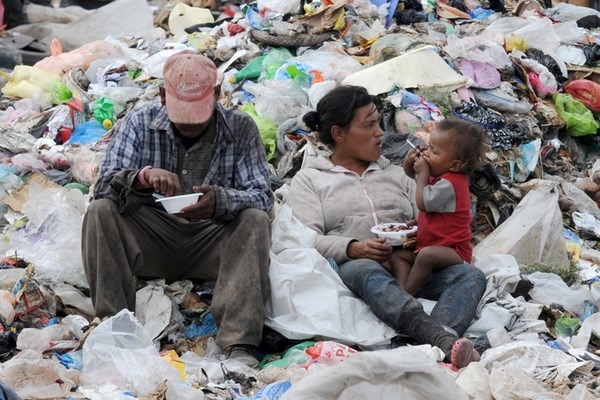Thorny journey after migrant's life-changing dream
NDO - In 2021, Latin America and the Caribbean region experienced an unprecedented level of migration, with
NDO - The serious development of the COVID-19 pandemic is threatening to cause famine in many countries around the world. The Food and Agriculture Organisation of the United Nations (FAO) has warned of an increase in hunger in Latin America and the Caribbean. Meanwhile, the United Nations Development Programme (UNDP) described an “alarming” socio-economic outlook for Afghanistan for the next 13 months.
Diseases and wars are exacerbating the world's hunger “hot spots”. The FAO estimates that about 60 million people in Latin America and the Caribbean are currently living in poverty, 14% higher than the same period in 2020. One in ten people in this region are now living in starvation.
Along with hunger, the problem of malnutrition is also alarming. According to the FAO, Haiti posts the highest level of malnutrition in the region at 46 percent. Meanwhile, this rate in Venezuela is 27.4%, a sharp rise from the 22.2% recorded in the 2016-2018 period. The rate of hungry people in Argentina is 3.9% and the corresponding figure in Bolivia is 12.6%.
Meanwhile, Afghanistan is also becoming a hot spot for hunger, not only because of the pandemic, but also because of political and security instability. The country has faced many serious problems since the Taliban took power in mid-August. Hunger has increased as development aid has plummeted in addition to the outbreak of the COVID-19 pandemic and drought, causing severe economic hardship.
According to UNDP projections, more than 90% of the population of Afghanistan will fall into poverty in mid-2022. About 22.8 million people in this country are facing food shortages. To ease economic difficulties and severe hunger for Afghanistan, the UNDP has just called for a support of 100 million USD to create more jobs and 90 million USD to help small businesses in Afghanistan. The UNDP has affirmed that this is the best measure to help solve poverty in the South Asian country.
In addition to the countries mentioned above, hunger is also seriously threatening the countries in the “Arab world”. In a recently released report, FAO said that 420 million people in the “Arab world” did not have enough food to eat while 69 million people were malnourished in 2020.
According to the FAO, the number of people undernourished in the “Arab world” has grown by 91.1% over the past two decades. Somalia and Yemen, two countries affected by conflicts, remain the countries with the most severe hunger with nearly 60% of the Somali population being undernourished and more than 45% of the Yemeni population being malnourished.
The big problem in these countries is low economic growth due instability and the pandemic, while the coverage rate of the COVID-19 vaccination is remarkably low. The World Bank (WB) forecasts that economic growth in Latin America and the Caribbean will be lower than expected and will likely only reach 2.8% in 2022 and 2.6% in 2023. These are the hardest hit areas in the world due to the COVID-19 pandemic and the pandemic have also caused a significant drop in job numbers.
UN experts say that the sustainable solution to solve hunger in countries is to ensure political stability, rebuild the economy, increase investment in education and infrastructure as well as renewing the energy system. However, to help these countries overcome the dual crisis of pandemic and famine in the immediate future, it is an urgent requirement for the international community to increase financial support, food and vaccines against COVID-19.
If hundreds of millions of people in poor countries of the “Arab world”, Latin America and the Caribbean are “left behind” in the current fight against COVID-19, it is likely that the world will still have to face new faster and more dangerous variants of the SARS-CoV-2 virus after Omicron.
